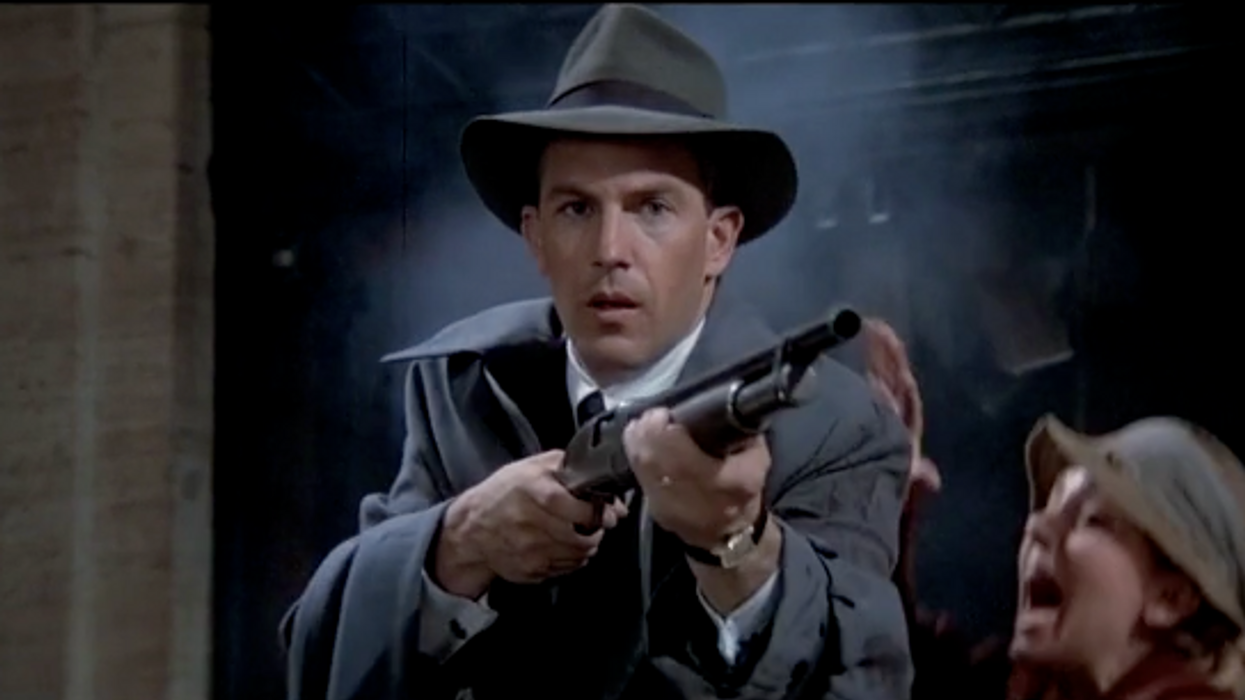A Shot by Shot Breakdown of the Bloodiest Scene from Brian De Palma's 'The Untouchables'
Time is figuratively and visually on Eliot Ness' mind throughout the first half of this scene.

In this exhaustive analysis of Brian De Palma's American crime drama The Untouchables, Antonios Papatoniou breaks down the very bloody, very pivotal "Union Station" scene shot by shot, noting every shot size, length, lens, and camera movement in order to take a closer look at how the use of POV adds depth and tension to an already intense scene.
Perhaps one of the first things you might notice about this scene is that it pays a very obvious homage to the "Odessa Steps" scene from Russian filmmaking legend Sergei Eisenstein's Battleship Potemkin. And because it's such an obvious homage, it adds a new angle and dimension to analyzing the scene. So, as I watched it, I thought about the political and moral themes from Battleship Potemkin -- the strain between the bourgeoisie and the proletariat, innocence and oppression, and how these things factored into the narrative of The Untouchables.
Here's the "Odessa Steps" sequence from Battleship Potemkin.
Another thing I'd pay particular attention to is time. We see several "time" motifs, like the setting (train stations are all about keeping time), the clock on the wall and the child in the carriage (though this is a nod to Potemkin, children and babies, as well as the elderly, often represent "time" or the lack thereof in films). Furthermore, since time is playing such a huge role in this scene, it's a pretty safe bet that special attention was paid to the pacing of it, too, meaning that the editing had to be incredibly precise to capture the pressure and tension of Eliot Ness' waiting. (Take special note of the duration of each shot!)
There is so much to learn from this scene alone! Check out Antonios Papatoniou's analysis below, and then scroll down for some tips on how to do your own shot by shot breakdown.
Shot lists are so incredibly helpful; I can't stress that enough. Many times when you're trying to analyze a movie, it's easy to get distracted and become completely engrossed in the story if you don't have a structure to your study. Setting aside some time to intentionally go shot by shot through a scene, writing down everything from the shot size to the camera movement, will help you understand films on a structural level.
If you need some tips on how to construct one, I'd suggest making an outline, as well as a storyboard, that lists each shot of your selected scene by number. There are so many things you can analyze in any given shot, but a few basic items would be:
- Shot duration
- Shot size (Wide Shot (WS), Medium Shot (MS), Close Up (CU), etc.)
- Camera angle (low, high, eye-line, canted/ "Dutch")
- Camera movement (pan, dolly, tracking, handheld, crane, fixed)
- Camera lens (telephoto, wide-angle, anamorphic)
- Action (What's key things are happening in this shot?)
A quick note: If I don't know what kind of lens is being used, I just write down whether the shot has a shallow or deep depth of field, since that's the bulk of what I'm looking for in finding out what kind of lens is being used. Furthermore, I always leave space to take notes on aesthetic things that stick out to me, but as you start doing your own shot lists, you're going to learn quickly what information is most helpful to you.
What did you think of the shot analysis of The Untouchables? Does creating shot lists and storyboards help you learn more about cinematography, editing, and/or the whole filmmaking shebang? How do you analyze scenes? Let us know in the comments below!
[via Antonios Papantoniou]












